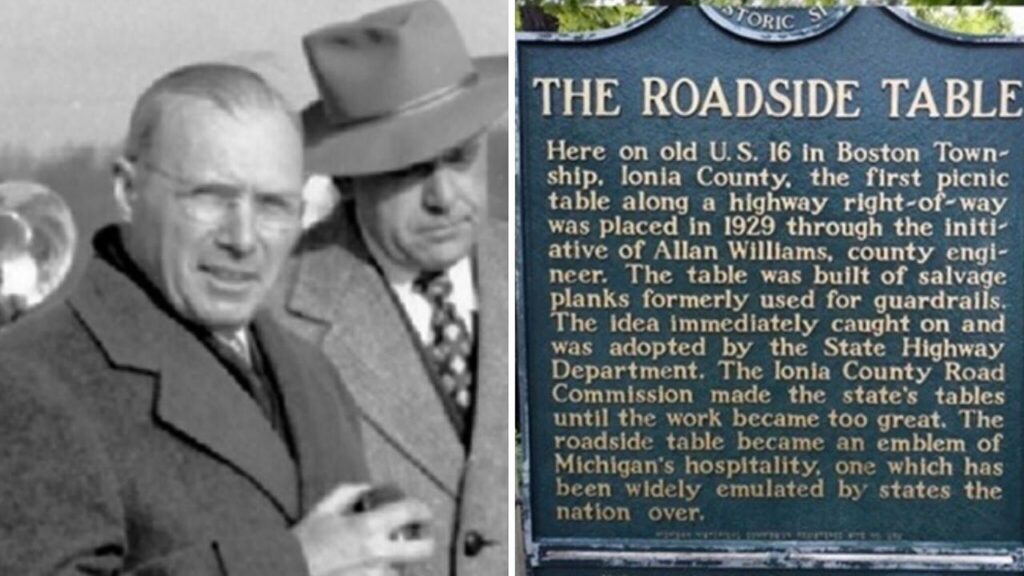The Motor City ignited the roar of the 1920s, with Chrysler, Ford, and General Motors emerging as the world’s three biggest automakers all in Detroit, Michigan. Customers needed a safe and convenient way to make their engines purr. This responsibility fell upon the shoulders of small-town Michigan visionaries who paved the way for the automobile to become synonymous with the open American highway. One such visionary was Allan Williams, the first-ever highway engineer in rural Ionia County, who proved to be one of the most influential figures in shaping the American highway system.
Williams conceived and created America’s first roadside rest area in 1929, a groundbreaking idea that took off faster than a big-block Motown muscle car. However, the highway rest stop was only one of many contributions Williams made to the speed, safety, and convenience of the American highway system. According to historian Sigrid Bergland of the Michigan Department of Transportation, Williams’ curiosity, intellect, varied skills, and vision influenced highway road maps, road signs, and even snow plows.
Williams was a Renaissance man, serving as a civic leader in both peacetime and wartime. He made significant improvements to the roads in his small-town life, showcasing a range of talents beyond his role as a transportation engineer. Born in 1892 in Ludington, Michigan, Williams inherited his varied interests and natural gifts for fixing things from his father, who transitioned from a camp cook to an electrical engineer. Williams studied engineering at the University of Michigan before finding his calling as the county engineer for the Ionia County Road Commission in 1919.
During the 1920s, the automobile became a major part of the American landscape. Williams witnessed the increasing popularity of cars and saw the need for better facilities for travelers along the highways. He observed families eating on the side of the road with limited comfort and decided to create a solution. Using leftover wood from the road commission garage, he constructed picnic tables that were painted green and placed along Route 16, setting the stage for what would become a nationwide phenomenon.
Williams’ roadside rest areas quickly gained popularity, with motorists from around the country providing positive feedback on the convenience and comfort they provided. By 1937, nearly 1,500 picnic tables had been placed around Michigan, many of them built by Williams’ staff in Ionia County. The state eventually took over the responsibility, and the roadside picnic table total in Michigan reached 2,500 by 1947. Today, there are 1,400 full-service highway rest areas along U.S. Interstate highways, offering countless picnic tables and seats for travelers.
Williams’ impact extended beyond his work on highway rest areas. He played a significant role in shaping Michigan’s highway system and was recognized with a Michigan Tourism Award in 1976 for his contributions. Despite some dispute over the origin of the roadside rest area concept, Williams’ legacy as a visionary and civic leader in small-town Michigan remains undeniable. His innovative approach to improving highway travel set the standard for convenience and comfort for generations to come, solidifying his place in American transportation history.












